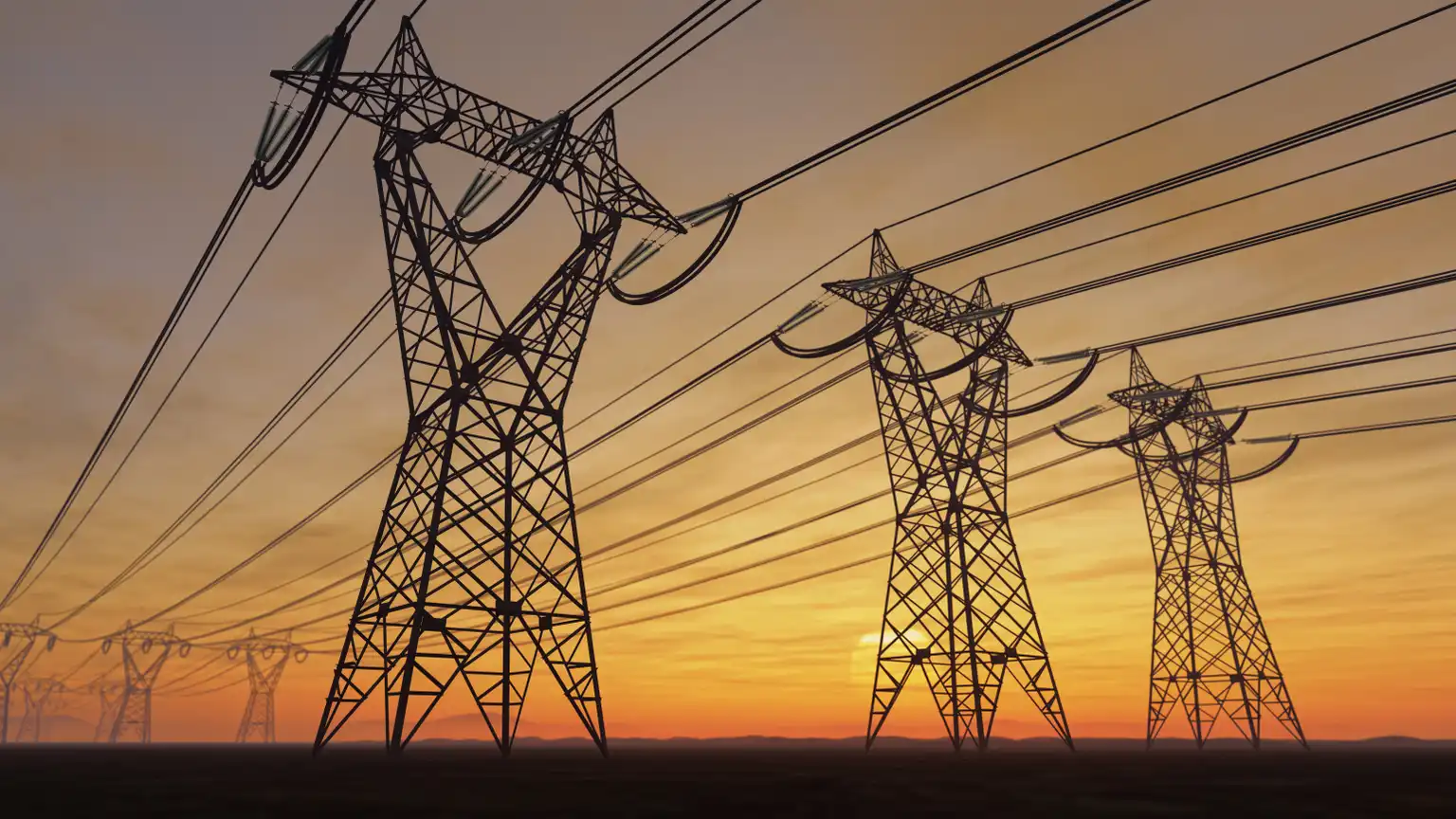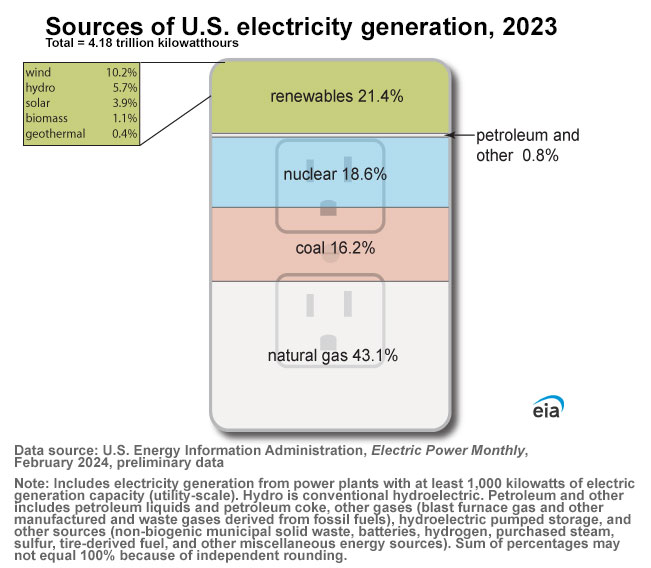Electricity in the United States is produced (generated) with diverse energy sources and technologies
The United States uses many different energy sources and technologies to generate electricity. The sources and technologies have changed over time, and some are used more than others.
The three major categories of energy for electricity generation are fossil fuels (coal, natural gas, and petroleum), nuclear energy, and renewable energy sources. Most electricity is generated with steam turbines using fossil fuels, nuclear, biomass, geothermal, and solar thermal energy. Other major electricity generation technologies include gas turbines, hydro turbines, wind turbines, and solar photovoltaics.
The U.S. Energy Information Administration publishes data on electricity generation from utility-scale and small-scale systems. Utility-scale systems include power plants that have at least 1 megawatt (MW) of electric generation capacity. Small-scale systems have less than 1 MW (1,000 kilowatts) of electric generation capacity. In 2022, total U.S. utility-scale electricity generation was about 4.24 trillion kilowatthours (kWh). EIA estimates that about 0.06 trillion kWh of electricity were generated with small-scale solar photovoltaic systems.
Fossil fuels are the largest sources of energy for electricity generation
Natural gas was the largest source—about 40%—of U.S. electricity generation in 2022. Natural gas is used in steam turbines and gas turbines to generate electricity.
Coal was the third-largest energy source for U.S. electricity generation in 2022—about 18%. Nearly all coal-fired power plants use steam turbines. A few coal-fired power plants convert coal to a gas for use in a gas turbine to generate electricity.
Petroleum was the source of less than 1% of U.S. electricity generation in 2022. Residual fuel oil and petroleum coke are used in steam turbines. Distillate—or diesel—fuel oil is used in diesel-engine generators. Residual fuel oil and distillates can also be burned in steam and gas turbines.
U.S. electricity generation by major energy source, 1950-2022
billion kilowatthoursU.S. electricity generation by major energy source, 1950-2022petroleum and otherrenewablesnuclearnatural gascoal1950196019701980199020002010202005001,0001,5002,0002,5003,0003,5004,0004,500Data source: U.S. Energy Information Administration, Monthly Energy Review and Electric Power Monthly, February 2023,preliminary data for 2022Note: Includes generation from power plants with at least 1 megawatt electric generation capacity.
Nuclear energy provides nearly one-fifth of U.S. electricity
Nuclear energy was the source of about 18% of U.S. electricity generation in 2022. Nuclear power plants use steam turbines to produce electricity from nuclear fission.
Renewable energy sources provide an increasing share of U.S. electricity
Many renewable energy sources are used to generate electricity and were the source of about 22% of total U.S. electricity generation in 2022. In 1990, renewable resources provided about 12% of utility-scale electricity generation.
U.S. electricity generation from renewable energy sources, 1950-2022
billion kilowatthoursU.S. electricity generation from renewable energy sources, 1950-2022solarwindgeothermalbiomasshydroelectric1950196019701980199020002010202001002003004005006007008009001000Data source: U.S. Energy Information Administration, Monthly Energy Review and Electric Power Monthly, February 2023,preliminary data for 2022Note: Includes generation from power plants with at least 1 megawatt electric generation capacity. Hydroelectric isconventional hydropower.
Wind energy was the source of about 10.2% of total U.S. utility-scale electricity generation and accounted for 47.6% of electricity generation from renewable sources in 2022. Wind turbines convert wind energy into electricity.
Hydropower plants produced about 6.2% of total U.S. utility-scale electricity generation and accounted for 28.7% of electricity generation from renewable sources in 2022.1 Hydropower plants use flowing water to spin a turbine connected to a generator.
Solar energy provided about 3.4% of total U.S. utility-scale electricity and accounted for 15.9% of utility-scale electricity generation from renewable sources in 2022. Photovoltaic (PV) and solar-thermal power are the two main types of solar electricity generation technologies. PV conversion produces electricity directly from sunlight in a photovoltaic cell. Most solar-thermal power systems use steam turbines to generate electricity. EIA estimates that about 0.06 trillion kWh of electricity were generated with small-scale solar photovoltaic systems.
Biomass was the source of about 1.3% of total U.S. utility-scale electricity generation and accounted for 5.9% of electricity generation from renewable sources in 2022. Biomass is burned directly in steam-electric power plants, or it can be converted to a gas that can be burned in steam generators, gas turbines, or internal combustion engine generators.
Geothermal power plants produced about 0.4% of total U.S. utility-scale electricity generation and accounted for 1.9% of electricity generation from renewable sources in 2022. Geothermal power plants use steam turbines to generate electricity.




